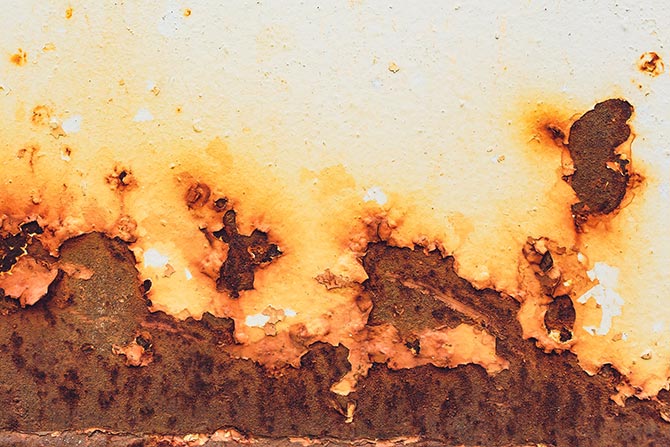Vehicle safety inspections often rely on the experience and judgment of the certified technician performing the inspection. Deciding whether a vehicle passes or fails is a significant responsibility that rests entirely with the inspector. In 2019, state legislators recognized the need to clarify ambiguous laws to help make these decisions more straightforward and less stressful for inspectors. Their goal was to support you in making fair, informed decisions without fearing losing your inspection license for not automatically failing anything borderline. Maintaining the integrity of the inspection program is essential. It starts with you, the inspector, following clear guidelines such as these. Repeated non-compliance not only weakens public trust in the program but also raises concerns among legislators about its effectiveness.
When it comes to vehicle safety, rust is more than just an eyesore — it can present significant hazards if left unchecked. In New Hampshire, RSA 266:3-a outlines the legal requirements for rust inspections during the state’s mandatory vehicle inspection process. The accompanying administrative rule, Saf-C 3221.06, provides further guidance on how this law is applied in practice. In this article, we’ll break down the statute, explain why rust matters and help you understand how these regulations work together to keep New Hampshire drivers safe.
RSA 266:3-a: The Rust Inspection Law
New Hampshire law requires that all private passenger vehicles and light trucks undergo an inspection to assess for rust-related safety issues.
Section 266:3-a Rust
“The director shall establish a procedure for the external visual examination for rust of private passenger vehicles and light trucks during the inspection required by RSA 266:1. The procedure shall include requirements for further examination if substantial rust is observed. No private passenger vehicle or light truck shall pass the inspection requirements of RSA 266:1 if the procedure reveals any of the following:”
I. Rust that permits exhaust gases to enter the passenger or cargo compartment.
II. Any metal or any loose or dislocated parts protruding from the surface of the vehicle so as to create a hazard.
III. A bumper that is rusted so that it is not firmly attached or that has broken or torn portions protruding from the surface so as to create a hazard.
IV. A frame that is not in solid condition.
Source: 2018, 43:1, eff. Jan. 1, 2019.
Why Does This Matter?
Rust can compromise the structural integrity of a vehicle, endangering both the occupants and other drivers on the road. The following are a few harmful consequences of rust:
- Exhaust Gas Intrusion: Rust holes can allow dangerous exhaust gases, such as carbon monoxide, to enter the passenger compartment.
- Sharp Edges and Protrusions: Loose, jagged metal from rust can cause injury or damage other vehicles.
- Compromised Bumpers: A rusted bumper may fail during a collision, reducing its effectiveness.
- Weak Frames: The frame is the backbone of the vehicle; significant rust can make the vehicle unsafe to drive.
Saf-C 3221.06: The Administrative Rule Behind the Law
The New Hampshire Code of Administrative Rules, Saf-C 3221.06, specifies the procedures for rust inspections as follows.
Saf-C 3221.06 Structural Rust
(a) In accordance with RSA 266:3-a, the mechanic shall conduct a thorough visual examination of the condition of the vehicle if substantial rust is observed.
(b) Such visual examination shall include but not be limited to:
- Frame, body, or chassis;
- Other structural components;
- Doors;
- Floor pans as described in Saf-C 3221.01;
- Bumpers as described in Saf-C 3221.04.
(c) In addition to (b) above, a vehicle shall be rejected if the frame or other structural components are broken, cracked, not in solid condition, or rusted to a degree that affects the safety of the vehicle.
(d) Welded frames shall be permitted as long as the joints have the equivalent strength or are stronger than the original frame and the alignment of chassis parts is not affected.
(e) Lap joint welds shall be permitted as long as the joints have the equivalent strength or are stronger than the original frame.
(f) A vehicle shall be rejected if metal or any loose or dislocated parts are protruding from the surface of the vehicle so as to create a hazard.
Key Elements of Saf-C 3221.06
- Inspection Procedure: Inspectors must perform a visual examination of the vehicle’s exterior and undercarriage for signs of rust.
- Further Examination: If surface rust is found, inspectors may need to conduct a more thorough investigation to determine if it compromises the vehicle’s safety.
- Pass/Fail Determination: If the inspection reveals rust that meets any of the disqualifying criteria listed in RSA 266:3-a or Saf-C 3221.06, the vehicle will fail its inspection.
How These Regulations Work Together
The law and the rule work hand-in-hand:
- RSA 266:3-a establishes the broad legal requirement to inspect for rust and defines what conditions cause a vehicle to fail.
- Saf-C 3221.06 provides the technical procedures for performing these inspections and ensures consistency across inspection stations.
If you have any questions about these regulations please email me at joleary@nhada.com or give me a call at (603) 224-2369.








